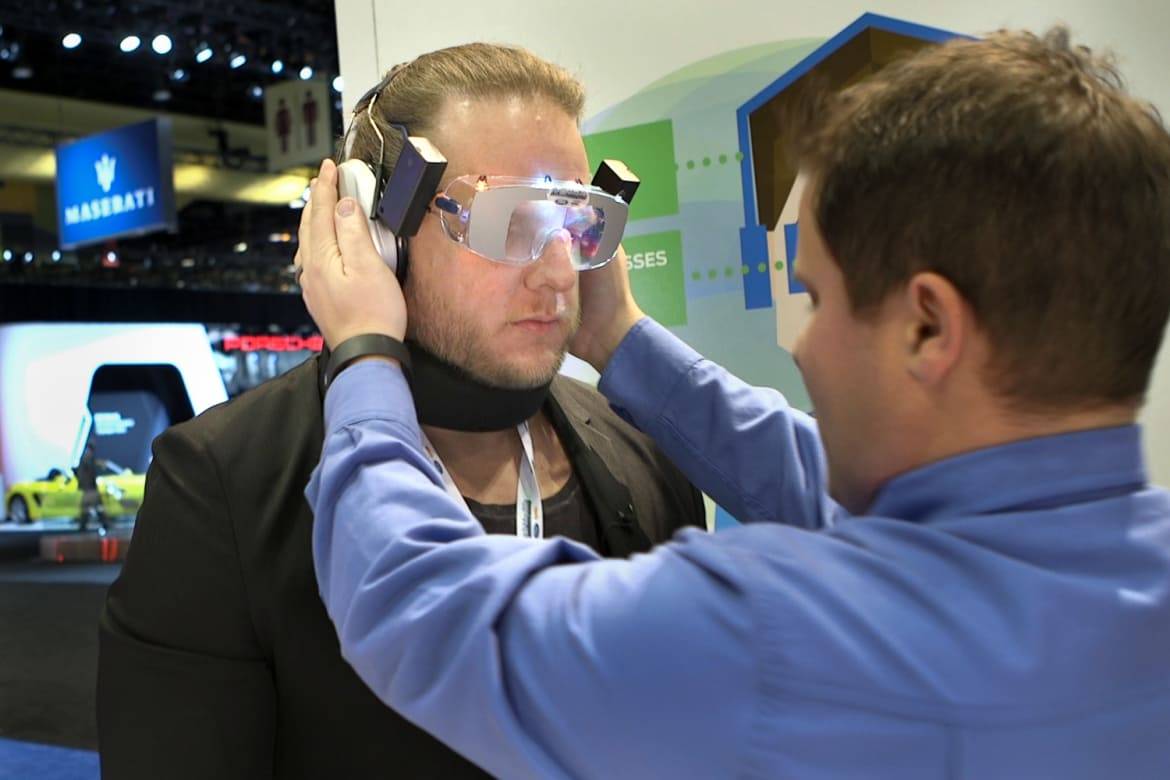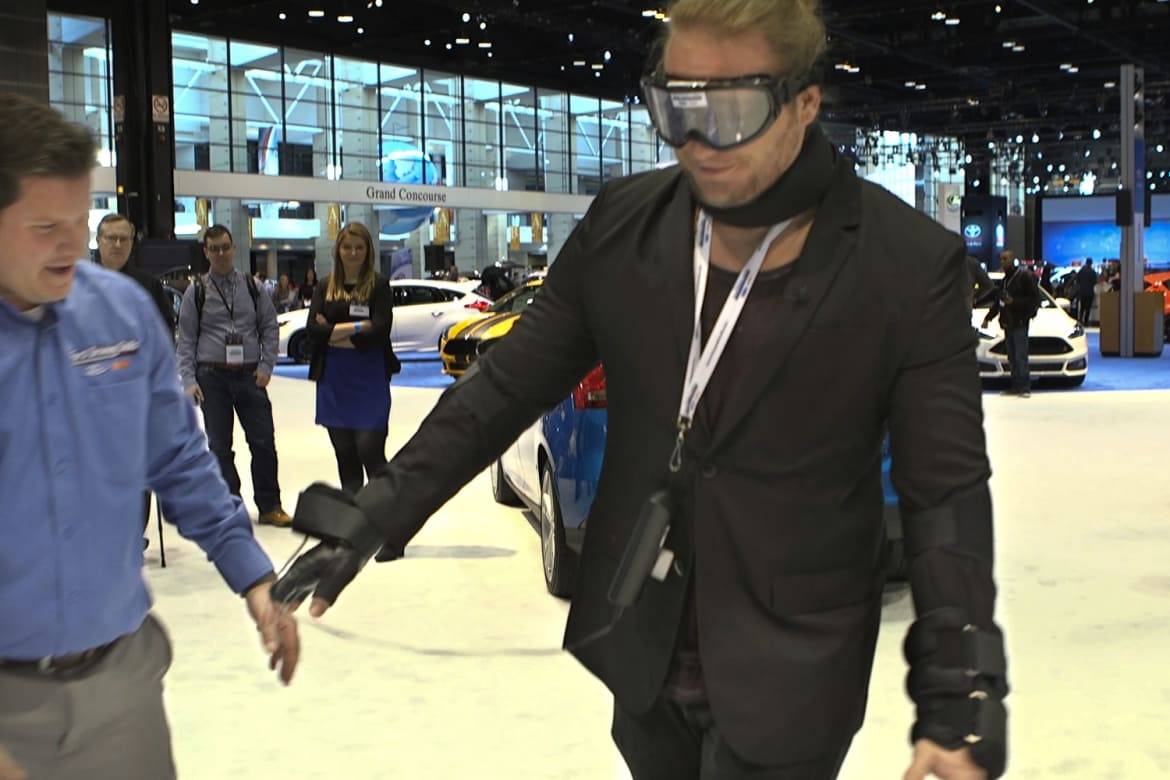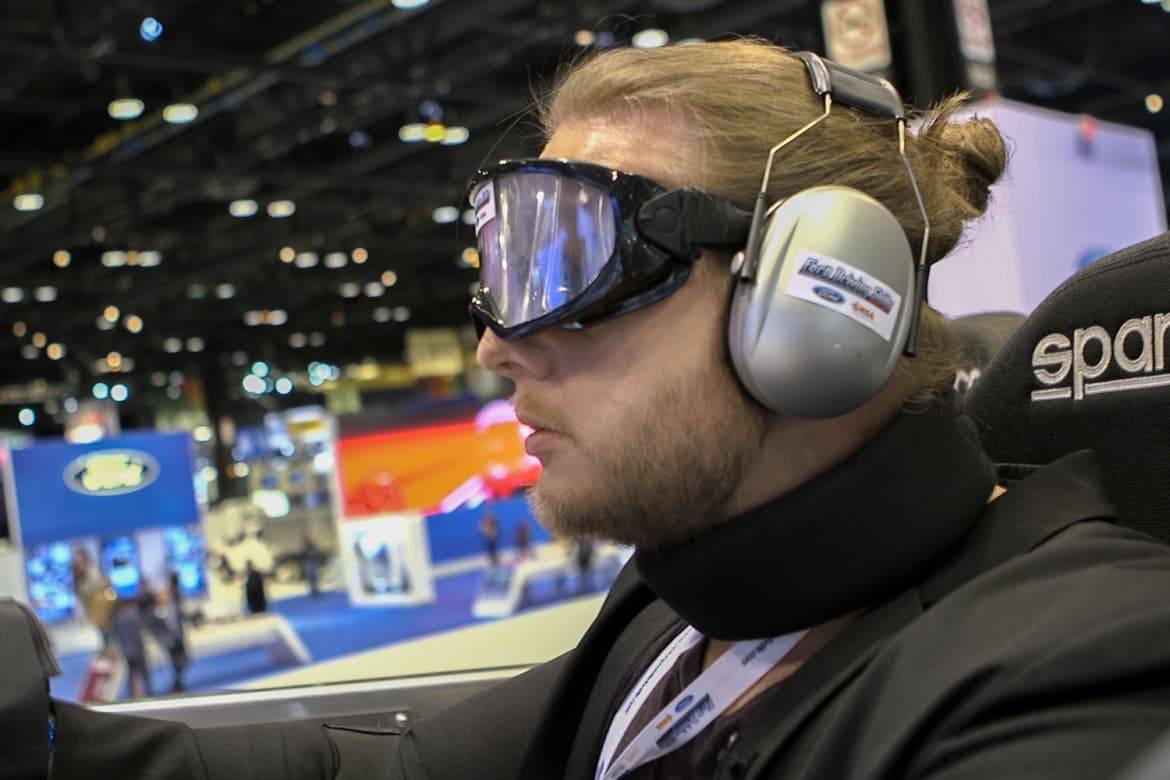I Tested Ford's Drugged Driving Suit and You Won't Believe What Happened! (OK, I Crashed)

CARS.COM — The percentage of drug-related highway deaths nearly rivals that of drunken-driving fatalities. That has scientists, safety advocates and automakers looking to address the issue — or, in Ford’s case, to dress it. Ford’s newly developed Drugged Driving Suit won’t win any raves on the fashion runway, but it may just help save someone’s life on the road.
More 2016 Chicago Auto Show Coverage
Designed in conjunction with the Meyer-Hentschel Institute in Germany, this 10-piece suit is intended to mimic the impairment experience of a suite of drugs, including cocaine, heroin, marijuana, ecstasy and LSD. I went for a personal fitting at the 2016 Chicago Auto Show and learned that if the real experience is anything like the one I had, driving while impaired is … well, unsuitable.

I wore weights on one ankle and on the opposite wrist, knee and elbow braces, a neck brace, a device that causes your hand to tremble, ear-muffling headphones and sensory-distorting goggles. They all work together to throw the wearer off-balance, restrict natural movement, disorient and distract. It was too difficult to walk, let alone drive a car.
First, I attempted to walk a straight line, much like a police officer would have a driver do during a DUI stop. The weights and braces made walking cumbersome and awkward, while the muffling effect and random noises produced by the headphones also put me off-kilter. The hand-tremor device didn’t really faze me, nor did the drug goggles, which used peripheral light flashes and colorful sensations to cause disorientation.
Though I doubt any highway patrol officer would be particularly impressed — I felt like Johnny Depp in “Fear and Loathing in Las Vegas” — I did manage to walk a straight line. As is often the case, however, things went downhill once the effects of alcohol entered the equation, introduced by a second set of goggles. They badly blurred my sight and caused double vision, quite authentically in the way that gross overconsumption of adult beverages can.

In concert with the effects of the drugs, or crossfaded as the youngsters say, my relatively passable performance walking heel-to-toe with the drug goggles on was derailed when I switched to the beer goggles. Instead of Depp in “Fear and Loathing” I was now moving like Leonardo DiCaprio in “The Wolf of Wall Street.” It was difficult enough to stand, let alone walk, and I wound up falling into the waiting arms of a demonstrator like a college freshman into the arms of his frat brother (Bro, I got you, man).
So, naturally, it was high time to get behind the wheel of a car. And if you’re gonna practice driving while drugged and drunk, you may as well do it in the $400,000, 650-horsepower Ford GT — or at least the driving-simulator version of the 2017 supercar. Long story short, my racing career quickly ended when I veered off the track and spent the rest of my time doing doughnuts in the infield, almost entirely unbeknownst to me. “Days of Thunder”? More like “Daze of Blunder.”

Kidding aside, though, the point of the exercise was to address the very real and grave concern of people driving while impaired by drugs or alcohol. The topic of drugged driving has garnered more scrutiny in recent years, as the legalization of recreational marijuana gains steam. Marijuana is now legal for recreational use in four states with others likely to follow, but recent research has suggested the link between marijuana and car crashes is more correlative than causal.
Still, the Governors Highway Safety Association last year cited 2013 research showing that 40 percent of drivers killed in car crashes tested positive for some form of drugs, just shy of the percentage for alcohol impairment — to which nearly 11,000 deaths are attributed annually. Meanwhile, the National Highway Traffic Safety Administration reported that 22 percent of drivers in roadside surveys tested positive for illegal drugs or medication; that’s in addition to Centers for Disease Control and Prevention figures showing that prescription painkillers now are dispensed at twice the rate they were in 1999.
“Driving after taking illegal drugs can have potentially fatal consequences for the driver, their passenger and other road users,” said James Graham, global program manager for Ford Driving Skills for Life, the automaker’s free novice-driver training program for which the suit was developed. “We have already seen first-hand the eye-opening effect that our Drunk Driving Suit has had on those who wear it, and are confident that our new Drugged Driving Suit will have a similar impact.”

Former Assistant Managing Editor-News Matt Schmitz is a veteran Chicago journalist indulging his curiosity for all things auto while helping to inform car shoppers.
Featured stories



